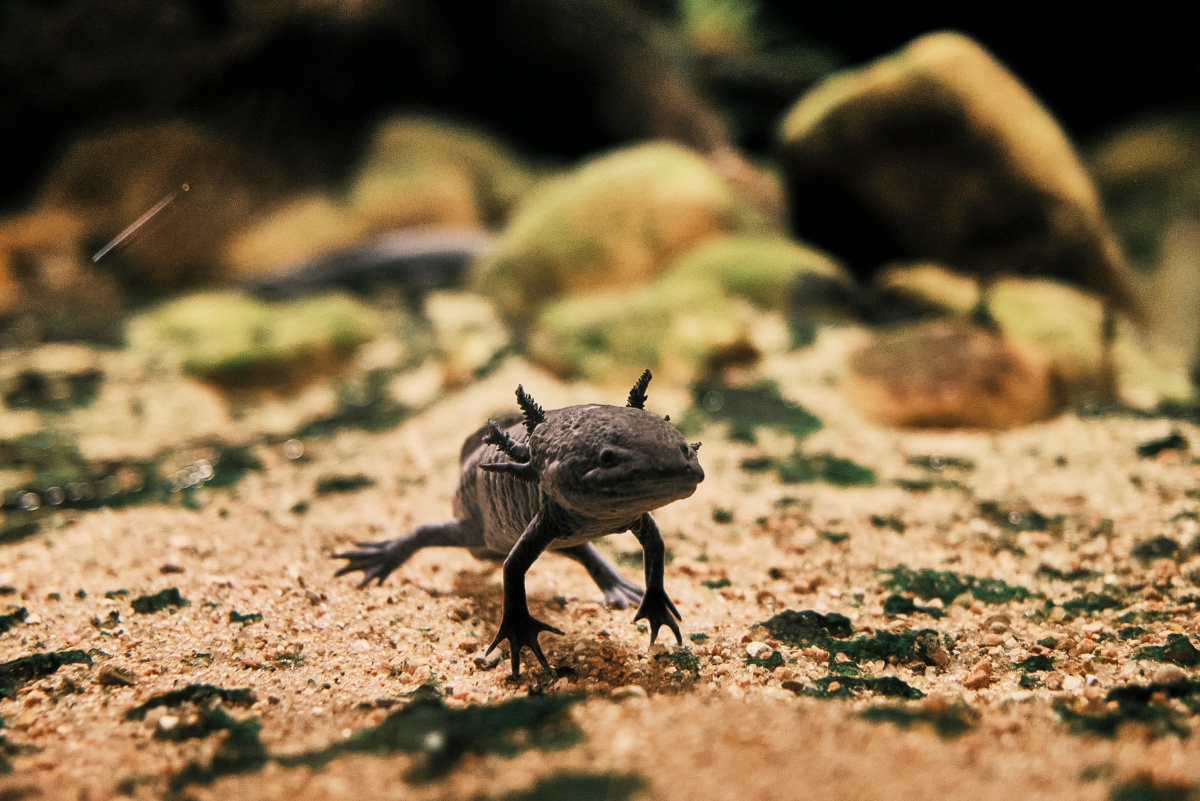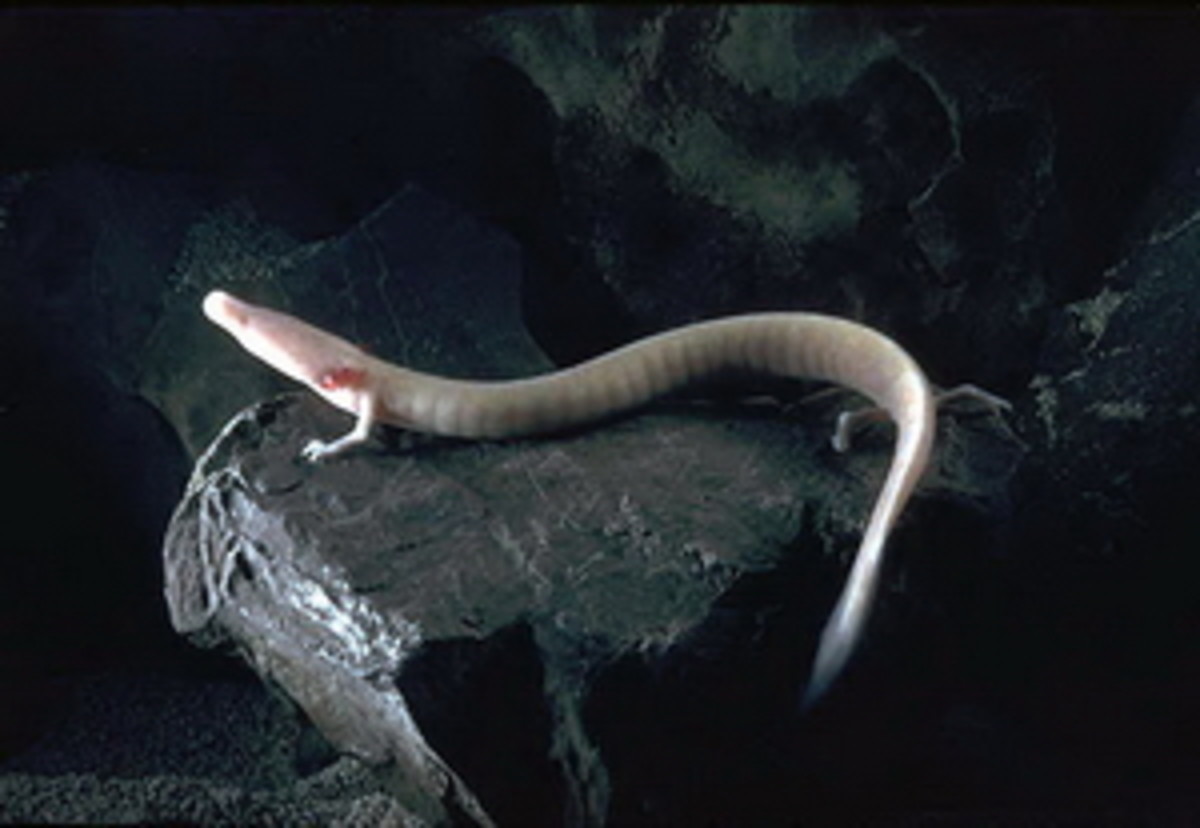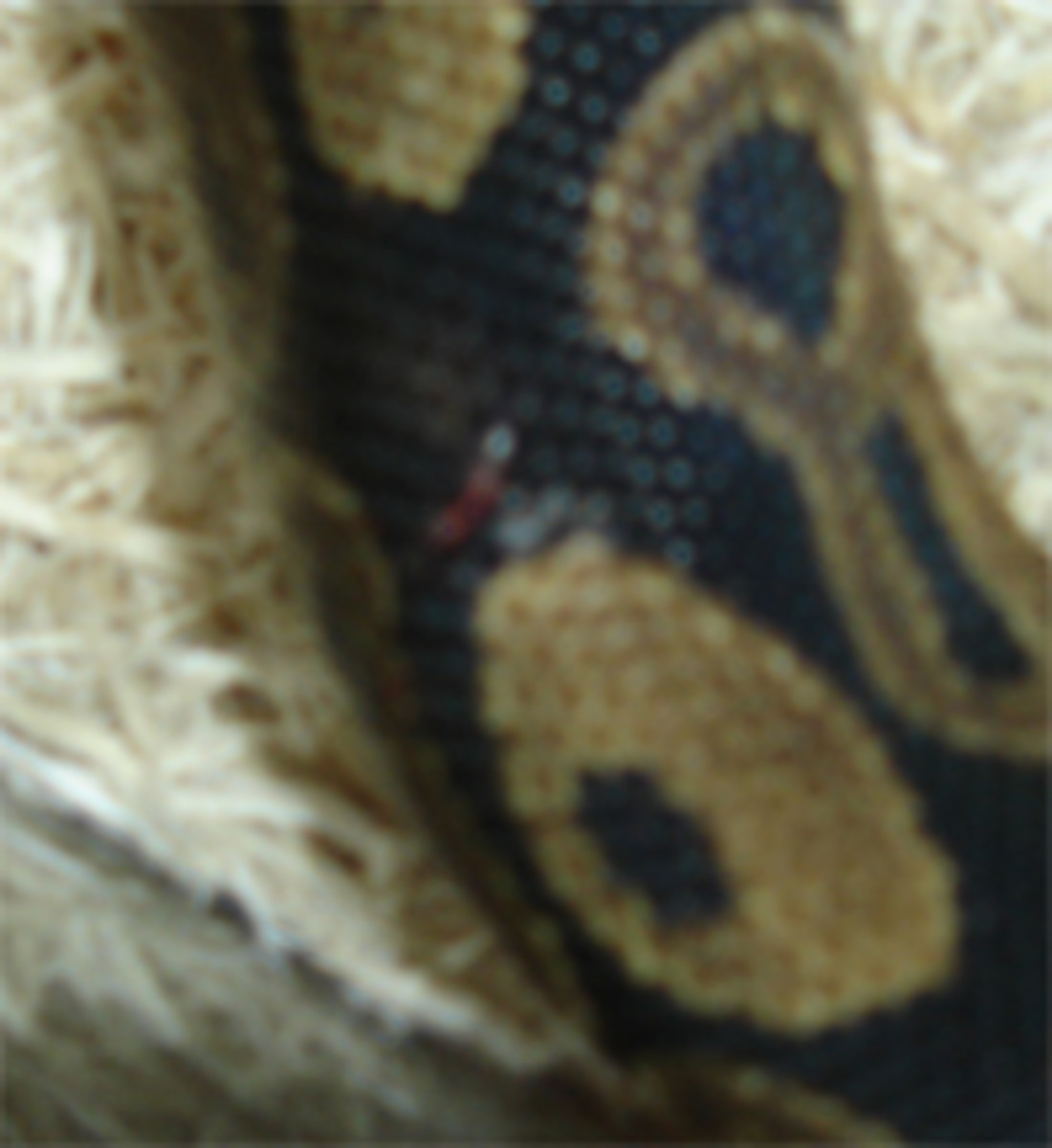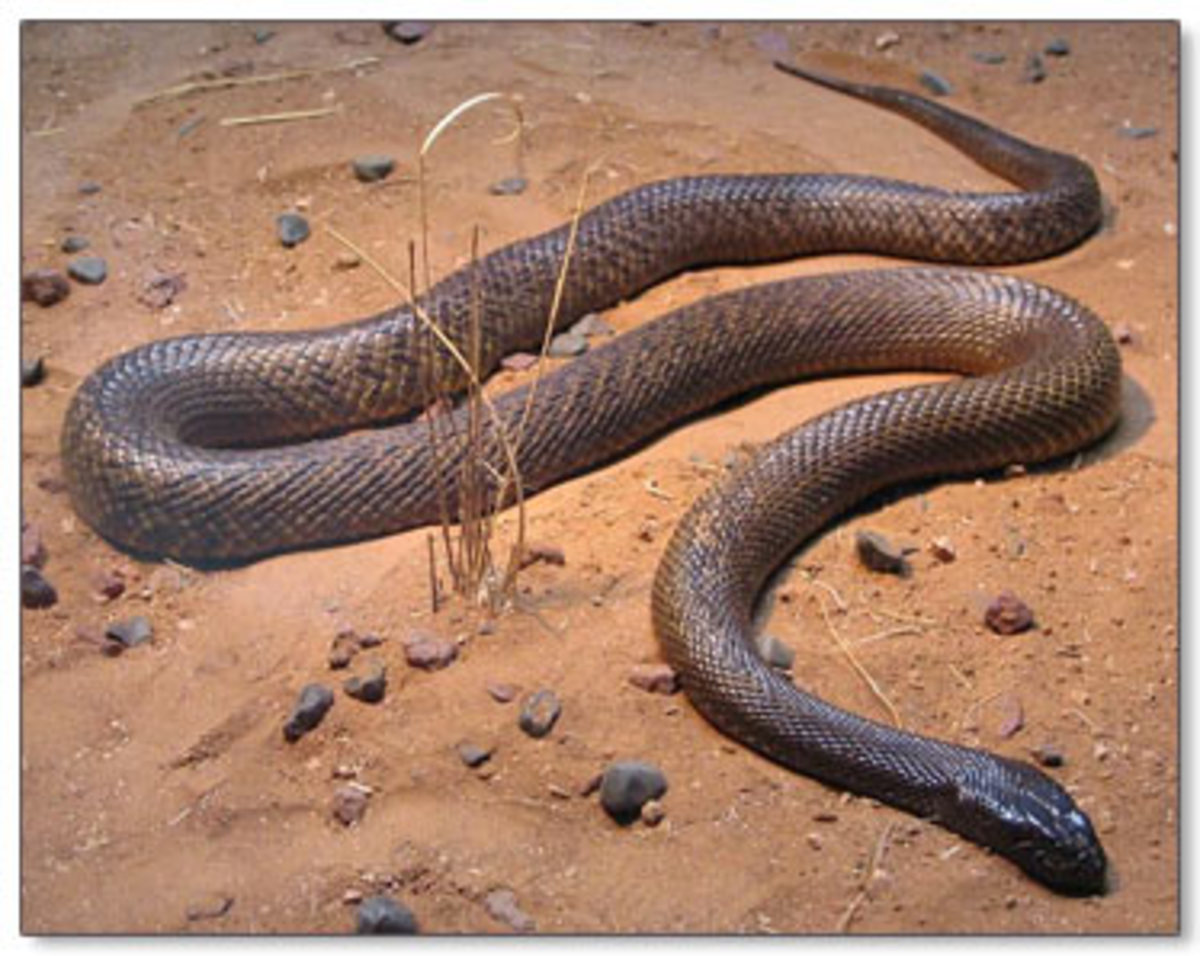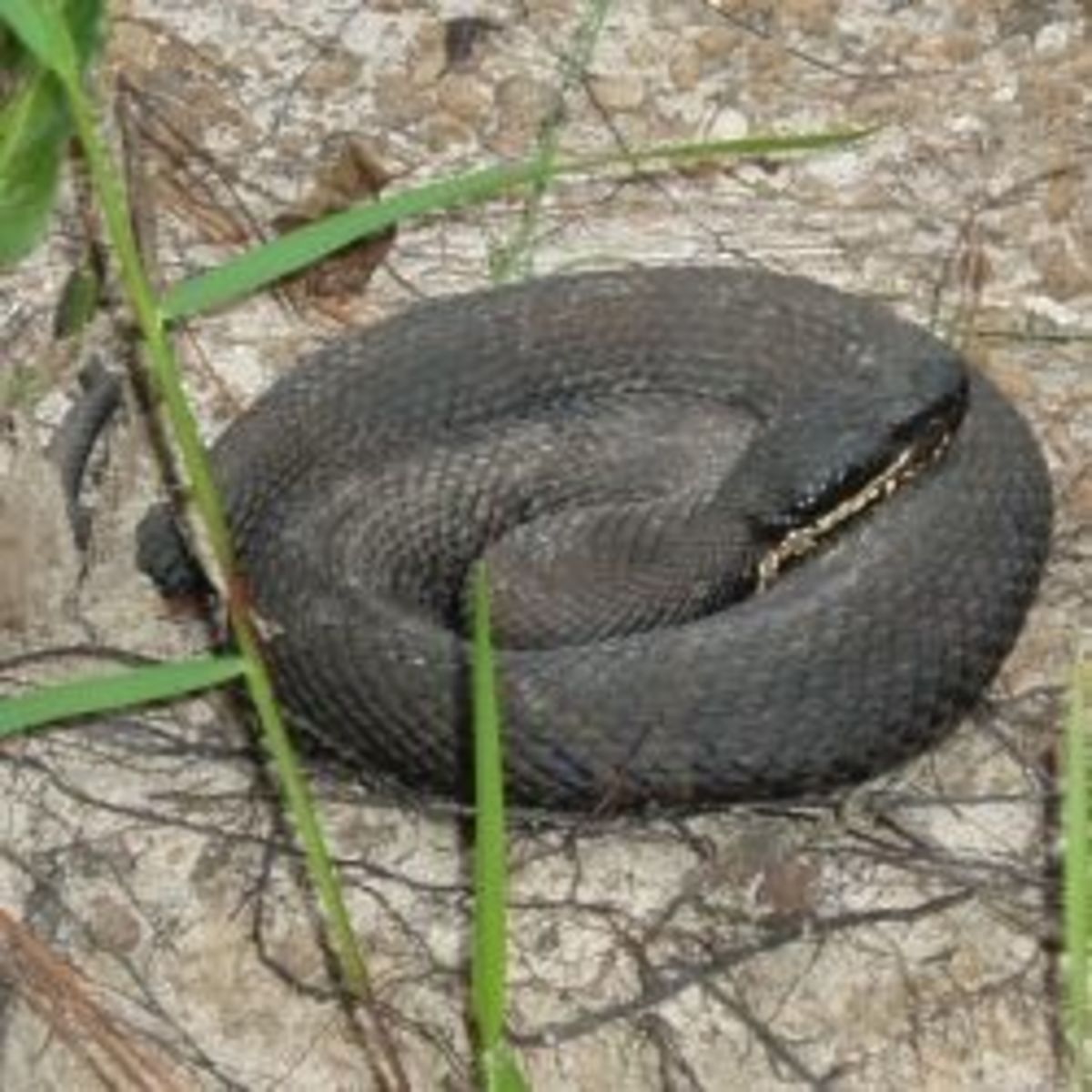Born In Flames, and Other Salamander Facts
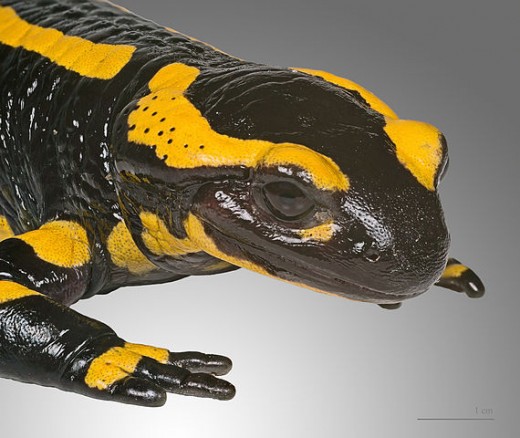
Salamanders are amphibians not reptiles!
The first surprising fact about salamanders is that they are not reptiles, despite their superficial resemblance to lizards. They are in fact amphibians, and their closest relatives are frogs and toads. They have smooth, moist skins, some are fully aquatic and even the terrestrial species depend on a humid habitat. They are restricted to wetlands and moist woodland, were they lead a nocturnal life style, hiding under logs or in moist holes during the day. Like other amphibians they go through a larval stage, the equivalent of the frog tadpole, although some salamanders have a bit more choice about their life cycle then frogs, and some choose to never grow up!
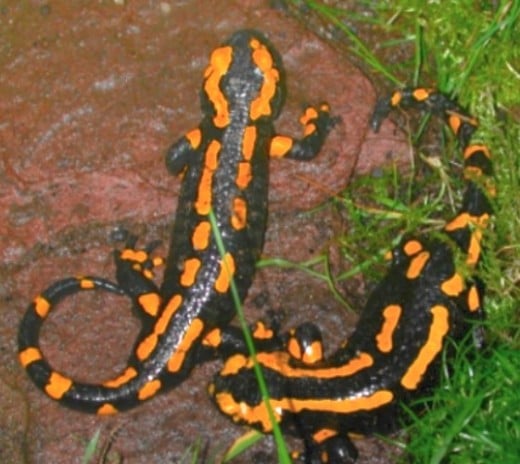
Is the fire salamander born in flames,fact or fiction?
The prettiest salamanders must be the European fire salamanders (Salamandra salamandra) , a beautifully marked black and yellow creature. There are many myths about salamanders being created in flames and they are associated with elemental fire in occult writings. They are described in the Talmud as a creature that is a product of fire, and that anybody smeared with their blood becomes immune to flame.
These legends probably originated from the fact that salamanders like to spend days hiding in rotting logs. When these were collected and used to build fires, the salamander would make a hasty exit from the flames, appearing as if it was born in the fire.
It is true, however that fire salamanders are poisonous, as advertised by their black and yellow coloration. They secrete toxins from glands just behind their eyes, and will produce a milky white irritating substance when threatened. The mucus does is not flame resistant!

Biggest salamander facts, the Chinese and Japanese giants
There are about 550 species of salamander described. Although most of them are medium sized, ranging from 3.9 in to 8 inches in length, the Chinese giant salamander (Andrias davidianus) can reach 6 ft and weigh 140 lb. The second largest species is the closely related Japanese giant salamander (Andrias japonicus), coming in at 5 ft. Both species are fully aquatic and nocturnal. The Chinese giant species can make barking or crying noises, some of which resemble the crying of a child, their Chinese common name means “infant fish”.
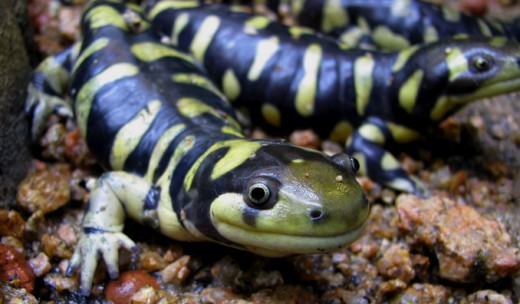
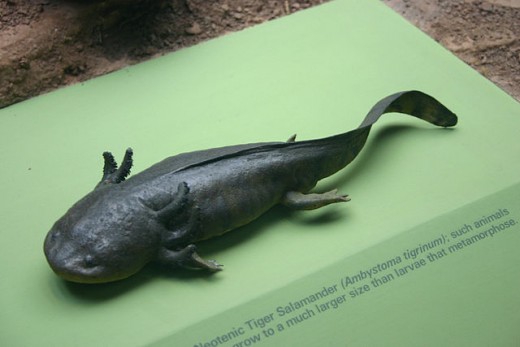
The tiger salamander, waterdogs and neoteny facts
Amphibians reproduce by laying eggs. Most go through a larval stage (like the frog tadpoles), which undergoes metamorphosis to change into the adult form. However the Eastern tiger salamander (Ambystoma tigrinum) can choose to never attain the adulthood and can exist in three different forms . The larvae are completely aquatic and have large external gills and caudal fins, and their limbs develop soon after hatching. In some instances, especially if they are present in seasonal pools that are in danger of drying up, they metamorphose into the adult, terrestrial form, quickly. In other settings, they continue growing until they reach the adult size, then change into the adult form. A fully grown tiger salamander larva is known as a waterdog, and is often used as fish bait. Some populations, living in favourable aquatic conditions but where the terrestrial environment is bad, never undergo metamorphosis, and reach sexual maturity while still in their larval form. They live out their whole lives, and reproduce as larvae. This is known as neoteny, where foetal characteristics are retained into adulthood.
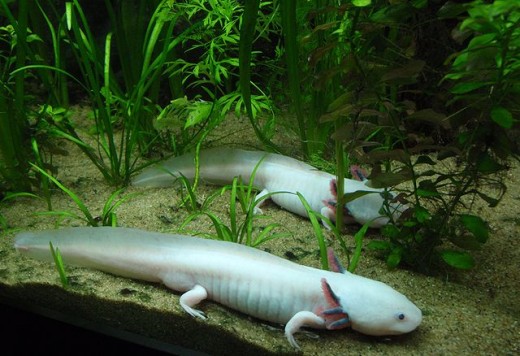
The axolotl, the 'water monster' that never grows up
A related salamander species the axolotl (Ambystoma mexicanum, the common name means water monster), has completely given up on the becoming a terrestial adult, and its life cycle consists entirely of the aquatic larval form, with prominent gills and underdeveloped limbs. Its failure to metamorphose is caused by a lack of thyroid stimulating hormone, which is essential for the production of thyroid hormone, which induces metamorphosis.
Although wild axolotls never change to the adult form under natural conditions, this can be artificially induced in them by injections of iodine or thyroid hormone. The adult form of the axolotl resembles that of the tiger salamander, but their lifespan is considerably reduced compared to the neotene form.
Salamanders are of great interest to biologists because of their remarkable regenerative abilities, whereas many lizards can regenerate their tails, axolotls have gone way beyond that and can regenerate whole limbs and essential body organs. The axolotl is an important model organism in scientific research into the biology of regeneration. Interestingly this ability is greatly reduced if they undergo forced metamorphosis.



